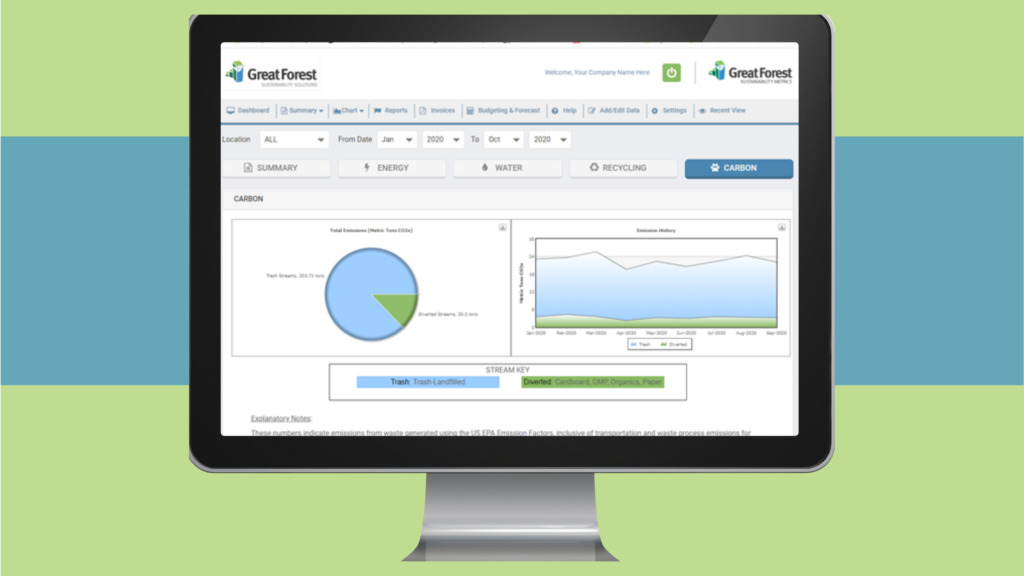
Click here to calculate your GHG from waste now
Did you know: Landfill and waste services are leading contributors to GHG emissions?
Waste is the next BIG frontier in fighting carbon emissions, but many property managers and building owners are missing this significant opportunity to reduce their building’s carbon footprint by focusing solely on energy use, and ignoring waste-related GHG (greenhouse gas) emissions.
In the commercial real estate industry, landfill and waste services are leading contributors to GHG emissions. The May/June 2021 issue of Harvard Business Review points out that scope 3 emissions, which include waste, represent the bulk of GHG impact for many companies, but few track it. This may soon be changing as stakeholders around the world are increasingly demanding accountability.
Why track waste-related GHG emissions?
REPORTING:
Currently, over 8000 companies disclose their carbon footprint data to the Carbon Disclosure Project, and reports are that most Wall Street research will soon include an ESG (Environmental, Social and Governance) score. Around the word, the pandemic has accelerated the demand for accountability. By including your waste-emissions data, you will have a fuller picture of your efforts, and you will be leading the way.
REDUCE YOUR WASTE + CARBON FOOTPRINT:
Once you know how your waste stream contributes to your carbon footprint, you will be able to start implementing strategies to reduce waste-related GHG emissions. This is an opportunity to have a big impact on BOTH carbon emissions and building waste.
How is GHG from waste calculated?
The GHG Protocol, which provides the world’s most widely used GHG accounting standards, provides guidance. But due to complexity in linking waste disposal to emissions, there are several methods used for collecting data, and different coefficients used by different agencies (EPA and DEFRA). Great Forest waste experts recently completed an in-depth study, which will soon be published, that analyzes and identifies the best approach.
Our research informs our calculations. Great Forest uses US EPA emissions factors together with Great Forest’s proprietary glass/metal/plastic emissions factors for a more accurate accounting of GHG emissions resulting from waste. The waste-related GHG metrics are inclusive of the transportation and processing of waste as per the GHG Protocol Scope 3 Category 5: Waste generated in operations.
What is your impact?
How do you calculate your waste-related GHG impact? All you need is your current tonnage for trash, recycling and organics for the most recent month. Click here to input those 3 figures to calculate your GHG from waste using US EPA emissions factors together with Great Forest’s recycling emissions factors. You will receive your GHG from waste data within 48 hours.
Now you can track your waste-related GHG emissions on the Great Forest Sustainability Metrics platform. Contact us if you are interesting in viewing emissions data on the metrics platform.
